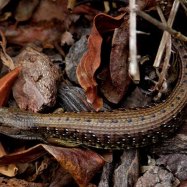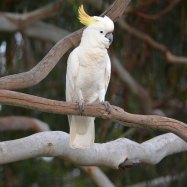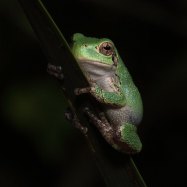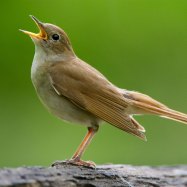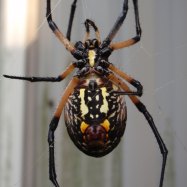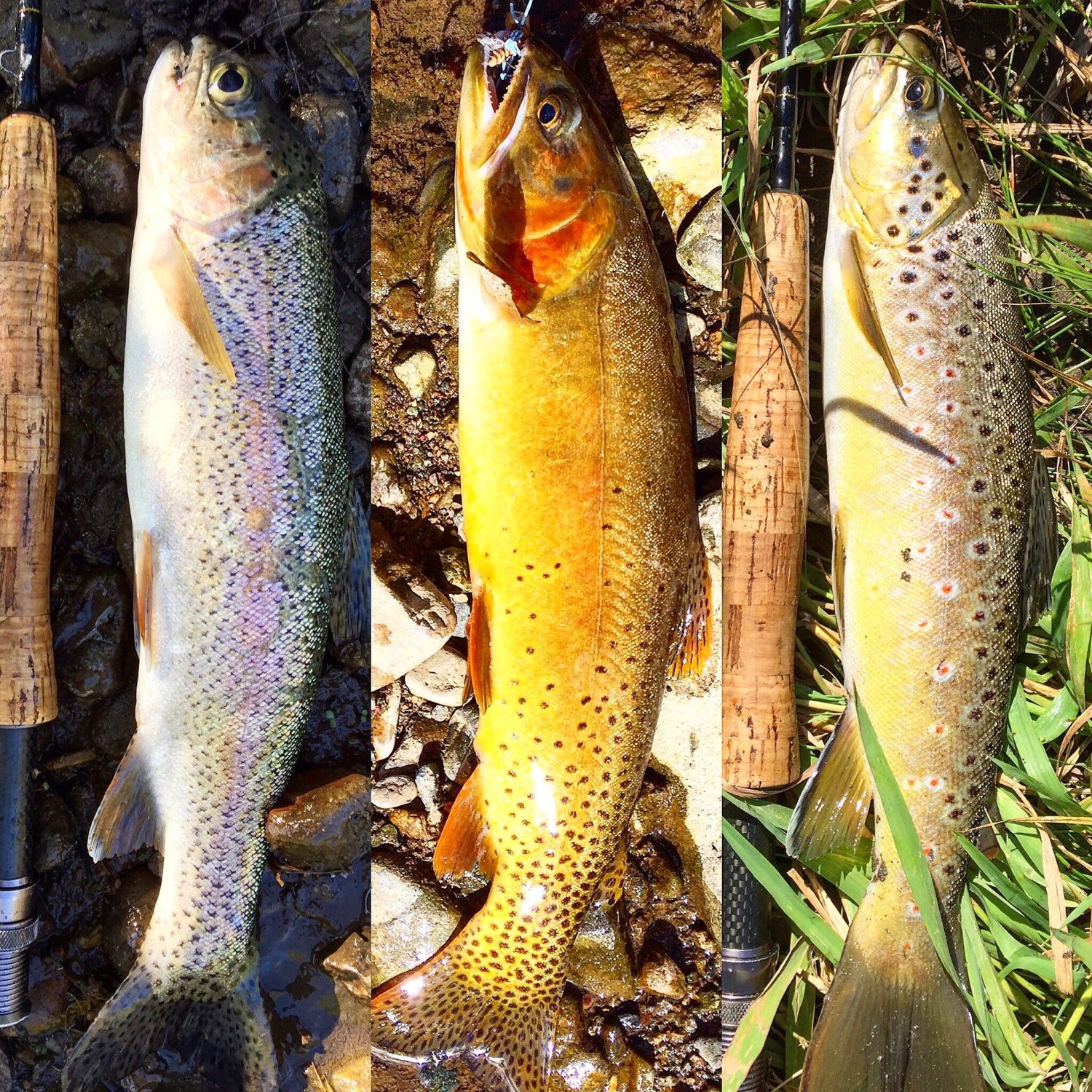
Sea Trout
30 - 80 cm
The sea trout, also known as brown trout, is a popular game fish found in rivers and coastal waters. With a streamlined and elongated body, these fish can grow up to 30-80 cm in length. Belonging to the Salmonidae family, they are known for their powerful swimming abilities and are highly prized by anglers. Next time you're near a river or coastal area, keep an eye out for these beautiful fish! #SeaTrout #Salmonidae #Fishing #GameFish
Animal Details Summary:
Common Name: Sea Trout
Kingdom: Animalia
Habitat: Freshwater and saltwater
The Fascinating World of Sea Trout: A Perfect Blend of Freshwater and Saltwater
Have you ever heard of a fish that can survive both in freshwater and saltwater? Well, it’s not a myth, but a reality. Meet the Sea Trout, a remarkable fish that has adapted to live in a diverse range of environments. This fish has fascinated marine biologists and anglers for centuries with its unique characteristics. In this article, we will dive deep into the world of Sea Trout and uncover what makes it such a fascinating creature Sea Trout.The Basics: What is a Sea Trout?
Scientifically known as Salmo trutta and commonly referred to simply as Sea Trout, this fish belongs to the animal kingdom of Animalia. It belongs to the phylum Chordata and is classified under the class of Actinopterygii. The order of this fish is Salmoniformes, and it belongs to the family Salmonidae, which includes popular fish like salmon, trout, and grayling.Where Can You Find Sea Trout?
One of the most interesting facts about Sea Trout is its vast geographical distribution. You can find them all around the Atlantic and Pacific coasts, making them one of the most widespread fish species in the world. Along with this, they can also be found in various countries, making them a diverse and adaptable species.In terms of their habitat, Sea Trout are primarily found in coastal waters and rivers. However, they are migratory fish, and they often move between freshwater and saltwater environments. This ability to thrive in both freshwater and saltwater habitats makes them a truly unique species Springador.
Appearance of Sea Trout
Sea Trout possess a stunning appearance with dark backs and silver sides. This coloration acts as a natural camouflage, allowing them to blend in with their surroundings, whether in freshwater or saltwater. The dark back helps them to stay hidden in the depths of the water, while the silver sides help them to blend in with the light reflections on the water's surface.Another interesting aspect of Sea Trout's appearance is its streamlined and elongated body shape. This body shape is the perfect adaptation for living in different habitats, as it allows them to swim smoothly and effortlessly through different water conditions.
Feeding Habits of Sea Trout
Sea Trout are carnivorous by nature and feed on a wide variety of aquatic organisms such as fish, crustaceans, and insects. Juvenile Sea Trout primarily feed on small insects and crustaceans, while adult Sea Trout can even hunt larger prey like other fish.Their unique feeding habits also contribute to their survival in diverse habitats. They can adapt their diet according to the availability of food in both freshwater and saltwater environments, making them a highly adaptable species.
The Life Cycle of Sea Trout
The life cycle of Sea Trout is quite fascinating and involves a process called anadromy. This means that they are born in freshwater, live a part of their life in the sea, and then return to freshwater to spawn. This is a unique characteristic that not many fish possess, and it makes Sea Trout a truly remarkable species.Female Sea Trout lay their eggs in freshwater, and these eggs hatch into tiny fry. These fry then move downstream and spend a part of their life in the sea, feeding and growing into adults. After a few years, they return to freshwater to spawn and complete their life cycle.
The Role of Sea Trout in the Ecosystem
Sea Trout play a vital role in the marine ecosystem as both predator and prey. As a predator, they keep the population of their prey in check, contributing to a balanced ecosystem. On the other hand, they also serve as prey for larger fish and mammals, keeping the food chain in check.Moreover, Sea Trout's ability to thrive in both freshwater and saltwater habitats makes them essential for maintaining the health of these ecosystems. They help in transferring nutrients from one environment to another, contributing to a healthy and diverse ecosystem.
Conservation of Sea Trout
Like many other species, Sea Trout also face various threats that impact their survival and population numbers. Habitat degradation, overfishing, and pollution are some of the major threats to Sea Trout. Climate change is also causing changes in water temperature and ocean currents, affecting their feeding and spawning habitats.It is essential to take measures to conserve and protect Sea Trout's population to ensure its survival for future generations. This can be achieved through responsible fishing practices, pollution control, and the restoration of their habitats.
The Beauty of Sea Trout: A Rewarding Experience
Anglers and fishermen have long been captivated by the beauty and challenge of catching Sea Trout. They are known for their strong fight and acrobatic displays when hooked, making them a popular game fish. In some regions, Sea Trout fishing is also a significant contributor to the local economy, attracting both tourists and locals.Moreover, catching a Sea Trout requires skill, patience, and a deep understanding of their behavior and habitat. This makes it a rewarding experience for any angler who successfully lands this elusive fish.
The Role of Technology in Understanding Sea Trout
With the advancement of technology, marine biologists and researchers have been able to gain a better understanding of Sea Trout's behavior and life cycle. Various tracking devices, such as acoustic tags or satellite tags, have been used to monitor their movements and study their migration patterns. This data has been crucial in developing strategies for their conservation and management.Moreover, artificial breeding and stocking programs have also been initiated to help increase Sea Trout's population in areas where it has declined. These programs have proven to be successful in restoring their numbers, showing the important role of technology in understanding and protecting this species.
Final Thoughts
In conclusion, Sea Trout is a truly remarkable species that has adapted to survive in both freshwater and saltwater environments. Its unique characteristics, widespread distribution, and vital role in the ecosystem make it a fascinating species to study and observe. Whether you are an angler, scientist, or nature enthusiast, encountering a Sea Trout will leave you in awe of this magnificent creature. Let us continue to appreciate and protect this incredible fish as it continues to thrive in our oceans and rivers.

Sea Trout
Animal Details Sea Trout - Scientific Name: Salmo trutta
- Category: Animals S
- Scientific Name: Salmo trutta
- Common Name: Sea Trout
- Kingdom: Animalia
- Phylum: Chordata
- Class: Actinopterygii
- Order: Salmoniformes
- Family: Salmonidae
- Habitat: Freshwater and saltwater
- Feeding Method: Carnivorous
- Geographical Distribution: Atlantic and Pacific coasts
- Country of Origin: Various
- Location: Rivers and coastal waters
- Animal Coloration: Dark back, silver sides
- Body Shape: Streamlined and elongated
- Length: 30 - 80 cm
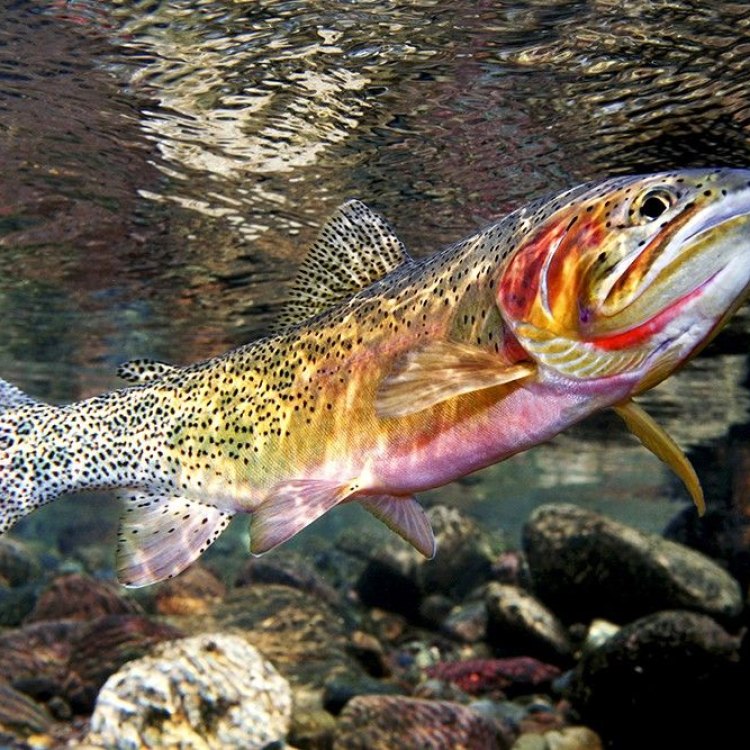
Sea Trout
- Adult Size: Up to 1 m
- Average Lifespan: 5 - 20 years
- Reproduction: Sexual
- Reproductive Behavior: Anadromous
- Sound or Call: Grating sound
- Migration Pattern: Upstream for spawning
- Social Groups: Solitary
- Behavior: Active at night
- Threats: Overfishing, habitat loss, pollution
- Conservation Status: Least Concern
- Impact on Ecosystem: Important prey species
- Human Use: Sport fishing, food source
- Distinctive Features: Spots on back and dorsal fin
- Interesting Facts: Can adapt to both freshwater and saltwater
- Predator: Humans, birds, larger fish
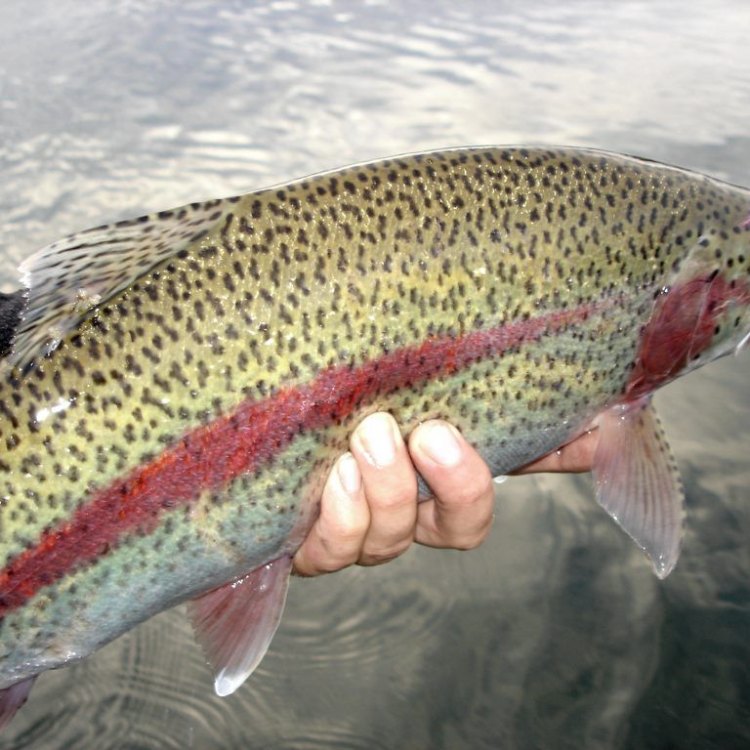
Salmo trutta
The Fascinating Sea Trout: A Unique Species Adapted to Thrive in the Waters
When one thinks of trout, images of crystal clear streams or pristine lakes may come to mind. However, there is a special type of trout that makes its home in the sea, aptly named the Sea Trout. This remarkable fish, also known as the Salmo trutta, is a species that is truly unique in its adaptation to thrive in both freshwater and saltwater environments.The Sea Trout, also known as the Brown Trout, has an adult size of up to one meter, making it one of the largest trout species PeaceOfAnimals.Com. It has a slender, elongated body with an olive to brown color, and distinct small black spots on its back and dorsal fin. These markings not only provide camouflage in its natural environment but also make it easily identifiable.
This species has an impressive lifespan of 5 to 20 years, depending on various factors such as habitat and food availability. They are known to be reproductive through sexual means, with the female laying thousands of eggs in the gravel beds of freshwater streams. These eggs take four to six weeks to hatch, and the young trout, called fry, stay in the safety of the gravel until they are strong enough to venture out.
One of the most unique traits of the Sea Trout is its reproductive behavior. As anadromous fish, it spends most of its life in the sea but migrates upstream to freshwater to spawn. This behavior is a critical part of its lifecycle, allowing the fish to return to its ancestral breeding grounds. When the fry hatch, they remain in these freshwater streams for 3 to 6 years, feeding on small invertebrates before making the journey back to the sea Sand Viper.
The Sea Trout uses a unique grating sound to communicate, which is produced by their vocal muscles rubbing against their swim bladders. This sound is only audible to humans through sophisticated equipment, but it plays an essential role in their reproductive and social behaviors.
Like athletes preparing for a big competition, Sea Trout also have a specific migration pattern. As they return to freshwater streams for spawning, they move upstream, against the current. This feat is impressive, considering they have to navigate through fast-flowing and sometimes turbulent waters. This behavior highlights their resilience and determination to complete their life cycle successfully.
Unlike many other fish species, Sea Trout are solitary creatures, preferring to spend their time alone. They are most active at night, using their excellent sense of smell and vision to hunt for prey. They have sharp, powerful jaws equipped with sharp teeth, making them skilled hunters of small fish, crustaceans, and water insects.
Unfortunately, the Sea Trout faces several threats, which could potentially harm its existence. One of the main threats is overfishing, as this species is a popular sport fish among anglers. Its impressive size and catching ability make it a prized catch, leading to a decline in population in some areas.
An even more significant threat to the Sea Trout's survival is habitat loss, particularly due to human activities such as damming rivers and destroying spawning grounds. Pollution is also a significant issue, as chemicals and waste from industrial and agricultural activities can damage their habitats and decrease their food sources.
Despite these challenges, the Sea Trout is currently classified as Least Concern on the IUCN Red List, thanks to conservation efforts in various countries. These efforts include improving water quality, restoring spawning areas, and implementing fishing regulations to reduce overfishing.
One of the most crucial roles of the Sea Trout in its ecosystem is as a prey species. They provide a significant source of food for predators such as humans, birds, and larger fish. They also play a crucial role in regulating prey populations, keeping the ecosystem in balance.
Humans have been using Sea Trout as a food source for centuries, with countless recipes featuring this delicious fish. It is also a popular sport fish, with anglers seeking thrill and adventure in catching this powerful creature. However, it is vital to ensure sustainable fishing practices to ensure the Sea Trout's continued existence.
In addition to its unique features and importance to the ecosystem, there are several interesting facts about the Sea Trout that make it a fascinating species. One of these is its ability to adapt to both freshwater and saltwater environments. This adaptation is possible through a process called osmoregulation, where the fish can regulate the salt level in its body to match its surroundings. This ability allows the Sea Trout to thrive in various conditions, making it a highly adaptable species.
In conclusion, the Sea Trout is a remarkable species that stands out for its unique characteristics and adaptations. From its anadromous reproductive behavior to its ability to thrive in both freshwater and saltwater, this fish is truly one of a kind. As we continue to learn more about this species, it is crucial to ensure its survival by addressing the threats it faces and adopting sustainable fishing practices. Let us appreciate and protect this remarkable creature so that future generations can also marvel at the wonders of the Sea Trout.
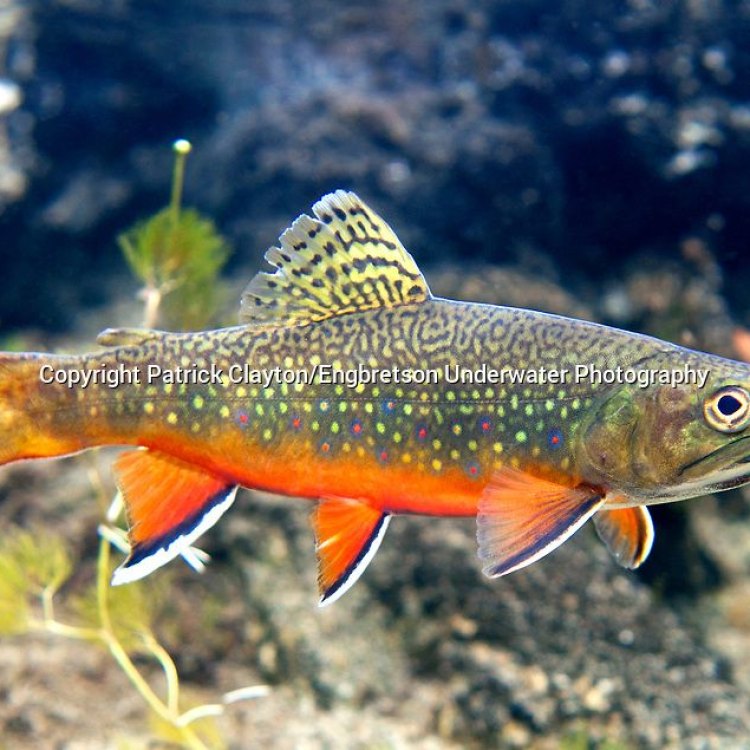
The Fascinating World of Sea Trout: A Perfect Blend of Freshwater and Saltwater
Disclaimer: The content provided is for informational purposes only. We cannot guarantee the accuracy of the information on this page 100%. All information provided here may change without prior notice.





